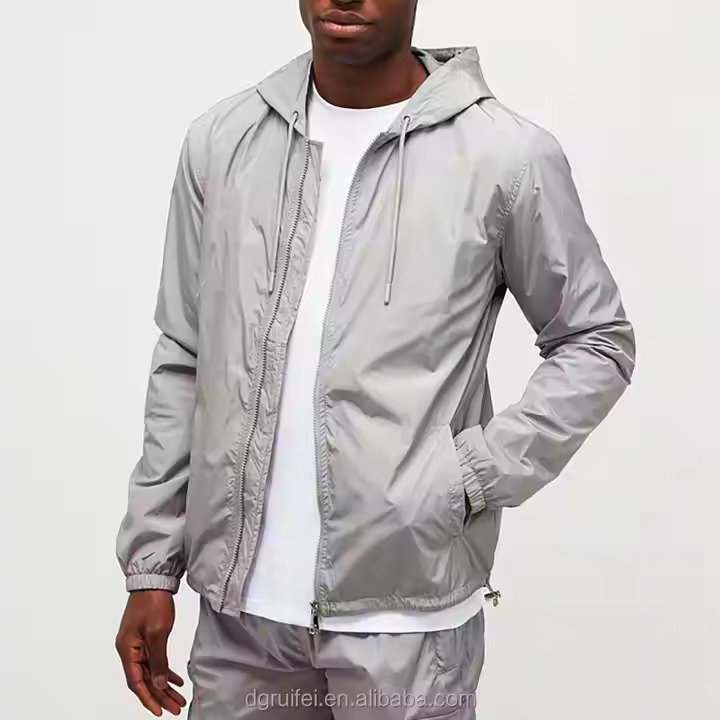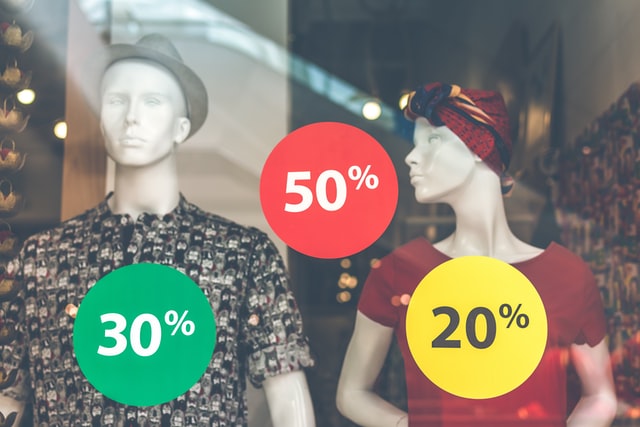歴史的にファッション業界では、ジャケットはファッショナブルなルックの最後の仕上げ、あるいは冷たい風に対する防御であった。しかし、一見ベーシックな衣料品が、今やサステナビリティの分野で完全に息を吹き返しつつあるのをご存知だろうか。実際、ジャケットは快適さや好みの表現というよりも、環境への配慮や責任を表明するものへと進化している。
グリーン」ジャケットの意外な魅力とは?消費者は、素早いデザインが環境に与えるダメージについてますます意識するようになっている。廃棄される衣服の山は埋立地へと運ばれ、製造過程で消費される原材料、エネルギー、水は時として多額にのぼる。同時に、雨に強く、強風から身を守り、夜の街でも十分に爽やかに見えるジャケットなど、高機能衣料へのニーズも高まっている。
100万ドル単位の疑問は、ジャケットが環境への責任と優れた操作性を両立できるかどうかということだ。簡潔に答えれば「イエス」であり、それが衣料品業界にまったく新しい波を起こそうとしている。ジャケット・メーカーは、耐久性と地球に優しい理想の両方を反映したアイテムをデザインすることができれば、競争上の優位性を獲得し、環境に敏感な現代の消費者の心(と財布)をつかむことができることに気づいたのだ。
このブログでは、サステイナブルなジャケット・テキスタイルの魅力に迫り、これらの創造的な素材がどのように命を吹き込まれるのか、どのように天候や日々の使用に耐えるのか、そしてなぜファッションの未来を意味するのかを調査する。明日着るジャケットが、今日世界を救う手助けになることを発見する準備はできていますか?さあ、飛び込もう!
「エコ」と「パフォーマンス」:高機能ジャケットの両立は本当に不可能なのか?
正直なところ、特に天候が不安定な場所に住んでいる場合、暖かくドライな着心地を保つジャケットは本当に不可欠だ。しかし、「エコフレンドリー」という言葉を聞くと、素材が弱かったり、防水性が低かったり、耐候性が十分でなかったりすることが懸念される。では、究極のパフォーマンスと地球を大切にする姿勢のどちらを選ぶべきなのだろうか?
ネタバレ注意: この2つは共存できる。テキスタイル・イノベーションの爆発的な進展により、「グリーン=弱い」「リサイクル生地ではダメ」という古い考え方は急速に取り払われつつある。ニューウェーブのジャケット・メーカーは、廃棄物やカーボンフットプリントを削減しながら、風や雨を確実にはじくテクノロジーを融合させている。
しかし、なぜ我々は彼らが対立していると考えるのだろうか?
- 歴史的前例:初期の "グリーン "ファブリックの試みは、耐久性や快適性に劣り、汚名につながった。
- 優先順位の不一致:一部のブランドは、性能のためのしっかりとした研究開発に投資することなく、「環境にやさしい」ボックスをチェックすることに重点を置いていた。
- 消費者の懐疑心:地球にとって良いもの」であれば、日常的な実用性において「私にとって良いもの」であるはずがないと、人々はすぐに思い込んでしまう。
幸いなことに、こうした障害はなくなりつつある。ペットボトルをリサイクルして耐久性のあるシェル素材に変えたり、有機農法で育てられたウールの通気性が化学繊維を上回ったりと、環境への配慮と実用性の結びつきはかつてないほど高まっている。現在販売されている新しい「グリーン」ジャケットの多くは、保温性、防風性、耐水性において従来のアウターウェアに匹敵するか、それ以上である。
だから、不可能ではない。ただ、デザインと素材調達により微妙なアプローチが必要なだけなのだ。そこでジャケット・メーカーは、「グリーン」な認証と確かな耐候性を融合させたジャケットを製造することで、安心して雨風に立ち向かうことができるのだ。
ソースからサステイナブルなジャケット生地の "DNA "とは?
サステイナブル・ジャケット生地の本当の特徴とは何だろうと考えたことがあるだろうか。おかしいと思うだろうか?エココンシャスな素材に特別なセンスを与える構成要素を見てみよう。
低負荷の天然繊維
- 強力な農薬を使わずに栽培されたオーガニックコットンは、通気性と柔らかさを備え、軽量ジャケットのライニングに最適。オーガニック栽培は、通常のコットンに比べて土壌の劣化や化学物質の排出を抑えます。
- 地球に優しい大物である麻とリネンは、水も化学薬品もほとんど必要としないタフな作物だ。特に麻は丈夫で、カジュアルなジャケットのデザインに合うかもしれない。
- ウールには天然の防臭性、通気性、断熱性があります。動物福祉を重視する農場から調達されたウールは、生分解性と再生可能性に優れた代替繊維です。
リサイクル合成繊維
- rPET(再生ポリエステル):廃棄されたペットボトルに新しい命を!この素材は糸に紡がれ、多くの防水シェルのベースとなる。プラスチックを埋立地に残さないだけでなく、驚くほど丈夫です。
- リサイクル・ナイロン:産業廃棄物や古い漁網から作られるリサイクル・ナイロンは、丈夫で破れにくいコートを作り出し、屋外での過酷な使用にも耐える。
動物に優しい断熱材
ダウンの充填は長い間、重量に対する保温性の高さから珍重されてきたが、その調達には倫理的な懸念がある。入る:
- リサイクル・ダウン:古い製品から回収され、新しい鳥を傷つけることなく、私たちが愛する毛羽を維持するために洗浄され、再加工されます。
- ビーガン・フィラー:合成素材や植物由来の中綿で、ダウンの高い保温性を模倣したもの。プリマロフトや、海藻や竹パルプから作られた新しい素材もある。
サプライチェーン認証
最後に、オープンさが秘密の要素である。例えば、GOTS(グローバル・オーガニック・テキスタイル・スタンダード)は、オーガニックコットンが厳格な環境・社会基準を満たすことを保証している。GRS(Global Recycled Standard)は、リサイクル素材の真正性と流通経路を認証するものです。これらの認証は、いわゆる「エコ・ジャケット」が本当に環境に配慮したものであることを示すことで、顧客からの信頼を高めている。
要するに、サステイナブル・ジャケットの "DNA "は、自然の恵みと人間の創意工夫の複合体なのだ。慎重に調達されたオーガニック繊維やリサイクル繊維を最新の織り技術や接着技術と融合させることで、ジャケット・メーカーは耐久性を犠牲にすることなく、地球に優しい基礎からスタートした製品を製造している。

エコの職人技を公開:染色、防水、仕上げはどのようにして「グリーン・アップグレード」を実現するのか?
持続可能な生地を見つけることは、戦いの一側面に過ぎない。次の難関は、その原材料を、雨、風、汚れ、そしてその間にあるあらゆる日常生活の要求に耐えうるジャケットに変換することである。その仕組みはこうだ:
減水または水なし染色
私たちはカラフルな衣服を当たり前のように着ているが、伝統的な染色は大量の水を消費し、化学物質を含んだ廃水は言うまでもない。入る 水なし染色 そして ローウオーター 使用量を劇的に削減する技術である。加圧された二酸化炭素を使って染料を生地に定着させる技術もあり、有害物質の排出を抑え、水の使用も節約できる。これは材料を節約するだけでなく、予想外に鮮やかで色あせしにくい色合いを生み出す。
環境に優しい防水コーティング
PFC(パーフルオロ化合物)の議論を思い返してほしい。環境耐久性という点では問題だが、これらの物質は耐水性コーティングのゴールド・スタンダードだった。今日のジャケット・メーカーは、ワックス・ベースやシリコン・ベースのコーティングなど、PFCフリーの代替品にシフトしている。これにより、有害化学物質が河川に浸透することを心配することなく、雨の中を歩くことができる。
裁断と縫製の革新
廃棄物削減は素材レベルにとどまらない。次のような技術もある。 レーザー切断 そして コンピューターによるパターンレイアウト 生地の使用量を最大化し、端切れを最小化する。また、ブランドによっては 超音波溶接 従来のステッチの代わりに縫い目を作ることで、より少ない材料で縫い目を作り、防水性を高めることができる。
厳しいチェックと品質管理
パンケーキの生地にダマが入るのを嫌うように、エコ・ジャケットにも粗悪な仕上げは求められない。評判の良い工場では、化学薬品の使用量、色落ち、縫い目の耐久性などを確認するため、生産途中で何度もチェックを行います。エラーを早期に発見することで、再加工や生地の無駄を減らし、全体的なカーボンフットプリントをさらに減らすことができるのです。
このような意図的な手順を踏むことで、朝にジッパーを閉めるジャケットは、風雨に厳しく、地球に優しいものになる。本当にサステイナブルなジャケットを作るために必要な複雑さを理解すれば、この戦略はマーケティングの流行語を超越し、創造性と努力に価値があることがわかるだろう。
着心地がよく、暖かく、天候に左右されない:サステイナブル・ジャケットはいかにして「シームレス」な性能を実現するのか?
雨のハイキングや風の強い通勤にジャケットを持って行ったことがある人なら、妥協の余地がないことをご存じだろう。ジャケットは機能しなければならない。結局のところ、それがアウターウェアの本質なのだ。では、このニューウェーブのサステイナブル素材は、現実世界の課題にどのように立ち向かうのだろうか?
主要パフォーマンス指標のラボ試験
ジャケットは通常、店頭に並ぶ前に厳しいテストを受ける。これには以下が含まれる:
- 通気性:24時間に1平方メートルの生地を何グラムの水蒸気が通過するか(g/m²/24hr)で測定。高いほど通気性に優れている。
- 水柱圧力:生地が漏水するまでに何ミリの水柱に耐えられるかで防水性を測る。性能の高いアウターシェルは10,000mm以上を目標とすることが多い。
- 防風性:通常、専用の風洞でテストし、衣服の耐風性を評価する。
コンシューマー・フィールド・トライアル
ジャケット・メーカーのなかには、研究室でのデータにとどまらず、ハイカーやバイカー、都市生活者のような実際のユーザーにプロトタイプを配布するところもある。そのジャケットが、風の強い丘の上や土砂降りの豪雨の中でも型崩れや着心地を損なわなければ、市場投入の準備は整ったということだ。
環境に優しいアウトドア・ブランド
パタゴニアからザ・ノース・フェイスに至るまで、有名企業は持続可能性と性能の共存を示すためにエコ素材を模索している。これらのラインの多くは保温性、乾燥性、耐久性を備えており、従来の同等品に匹敵する信頼性を持つものもある。
なぜ今なのか?
製織、コーティング、仕上げにおける技術の飛躍は、消費者の価値観における文化的な変化と融合した。人々は日常生活に耐えうる衣服を買いたいと願い、またそれが倫理的な優先順位を反映したものであることを望んでいる。今日のサステイナブル・ジャケットが優れているのは、業界が単に旧来の性能基準を満たすだけでなく、しばしばそれを上回る高度な技術に投資しているからにほかならない。
では、これらのジャケットは冬の朝の厳しい冷え込みや、春の嵐の予測不可能な水浸しにも対応できるのだろうか?もちろんだ。地球の幸福に目を向けながら、二重の勝利を手にすることができるのだ。
社会的責任とカーボンフットプリント:環境と地域社会に真のインパクトをもたらすジャケットとは?
サステイナブル・ジャケットを、純粋に「害を少なくする」というレンズを通して見るのは簡単だ。しかし、環境に配慮した新世代のアウターウェアは、環境だけでなく、それを生産する人々にとってもプラスになることを目指していることが多い。二酸化炭素の削減、より良い生活、そして地域社会を改善する波及効果。
炭素排出量の削減
ジャケットの製造は炭素集約的である。糸を紡ぎ、染色機を動かし、最終製品を世界中に輸送するために大量のエネルギーが使用される。しかし、先進的な企業は現在、工場での再生可能エネルギーの使用、輸送ロジスティクスの最適化、カーボン・オフセット・プログラムの奨励など、さまざまな対策を実施している。その結果は?すべてのジャケットのカーボンフットプリントは大幅に削減される。
コミュニティ・エンパワーメント
未加工の排出量だけでなく、人間的な側面もある。たとえば羊毛の責任ある調達は、動物福祉と公正な報酬が両立する小規模農家のコミュニティを強化することができる。化学物質の取り扱いにより安全な慣行を採用する工場は、労働者の健康も守る。一方、地元の職人と提携するブランドは、伝統工芸を守りながら、経済衰退の危機に瀕している地域に安定した収入をもたらすことができる。
ブランドイメージの向上
そう、"良いことをすれば良いPRになる "と記すのは皮肉に感じるかもしれない。しかし、それは真実だ。消費者はますます、ブランドに対して利益を超えた何かを求めている。検証されたカーボンフットプリント・データや地域社会への影響レポートが添付されたジャケットは、今日の混雑した市場において貴重な信頼を得ている。人々は単に衣服を買うのではなく、ひとつの理念を支持しているのだ。
保険料の支払い
多くの買い物客は、有害な化学薬品を使用しないジャケットや、農村開発に投資するジャケットのためなら、少々高くても構わないと思っている。購入のたびに、より公正な賃金や二酸化炭素排出量の削減に向けて業界のシフトに貢献できることを知れば、単純な小売のひとときを社会的意識の高いステートメントに変えることができる。
つまり、真にサステイナブルなジャケットがもたらす波及効果は、あなたのクローゼットだけにとどまらないのだ。環境に優しい素材を選び、社会的責任のある生産を行うことで、ジャケットメーカーは単なるアウターウェアを作るのではなく、人と地球の両方に敬意を払う世界的なムーブメントに参加するよう、あなたを誘っているのだ。

パーソナルでありながらエコ:サステイナブル・ジャケットは「スモールバッチ」と「トレンド・コラボレーション」の波に乗れるか?
サステイナビリティ(持続可能性)=単調、と思っているなら、考え直してほしい。今日のファッションシーンは、カスタムカラーからアーティストやインフルエンサーとの限定コラボまで、個性を大切にしている。新しいテクノロジーと俊敏な製造モデルのおかげで、環境に優しいジャケットの生産にも同じ精神が息づいている。
フレキシブルな小ロット生産
デザインしたジャケットを制作してもらうために、何万着ものジャケットを用意しなければならなかった時代は過ぎ去った。技術の発展、特にデジタル印刷と精密裁断は、費用を急増させることなく、より小さなバッチサイズを可能にした。そのため、ユニークな裏地やカラー・デザインのジャケットを300着セットで望むなら、それは本当に現実的なことだ。さらに良いことに、過剰生産が少なければ、残りの在庫が埋立地に蓄積される可能性も低くなる。
長寿命とパーソナライゼーション
人は、特別に「自分のもの」だと思われる服を捨てたくなくなるということを見たことがあるだろうか。イニシャルの刺繍、世界にひとつだけのデザイン、特別仕様のワッペンなど、パーソナライゼーションを取り入れているブランドは、顧客にそのコートをより長く大切にしてもらうことができます。第一に、不必要な在庫の発生を防ぐことができ、第二に、製品がすぐに捨てられてしまうのではなく、流通が維持されることである。
Z世代以降へのアピール
若い消費者は、自己表現と倫理的な調達に等しく価値を置いている。持続可能な素材とトレンドの美学を融合させることで、ジャケット・メーカーはスイート・スポットを獲得している。そして、その "エコ・シック "なジャケットを誇らしげに披露する人々の姿は、ネット上で話題となる。
エコ」をバッジに変える
一昔前なら、「エコフレンドリー」のラベルをつけることはニッチに思えたかもしれない。しかし現在では、それがステータスシンボルになりつつある。アウトドア・ブランドがストリート・アーティストと組んだような流行のコラボレーションは、責任ある生産を強調すると同時に、限定生産で話題性のあるジャケットを生み出すことができる。エクスクルーシブな興奮とサステナブルなメッセージを組み合わせることで、デジタル時代に響く勝利の方程式が生まれるのだ。
つまり、サステイナビリティがスタイルと衝突したり、消費者の選択肢を制限したりする必要はないのだ。実際、サステイナビリティはクリエイティビティや個性的なセンスをさらに刺激し、風雨から身を守るだけでなく、会話を弾ませ、あなたの価値観を証明するジャケットを着こなすことを可能にする。
ジャケットメーカーにエール:ワンストップ」ソリューションがサステイナブルなトレンドをリードするには?
サステイナブルなジャケットの世界に目を向けているブランドは、エキサイティングだが、少し気後れしているのではないだろうか?そこで適切な ジャケットメーカー がすべてを変えることができる。環境志向のデザイン、先進的な生産方法、エンド・ツー・エンドのサービスに優れたパートナーを見つけることで、コンセプトから消費者に至るまでの全行程を効率化することができる。
研究開発と素材革新
ある一流ジャケット・メーカーは、リサイクル・ポリエステルの混紡から生分解性防水コーティングまで、あらゆる実験に取り組み、研究開発に多くの投資を行っている。定評あるサプライヤーのネットワークは、疑わしい近道とは無縁の高品質の原材料を受け取ることを保証している。
コストと品質のバランス
サステナビリティというと、コストが高くつくという固定観念がある。しかし、サプライチェーンに磨きをかけた老舗メーカーであれば、環境に優しい素材を競争力のある価格で調達できるスイートスポットに到達することができます。大量注文や戦略的パートナーシップは、コスト効率の達成に役立つため、利益率のために環境を犠牲にする必要はありません。
実際の成功例
テイク おとなしく を例に挙げる。エココンシャスな考え方と最先端の製造技術を融合させることで知られるmodenlyは、サステイナブルジャケットに乗りたいブランドにワンストップソリューションを提供しています。オーガニックコットンの裏地や最先端のリサイクルシェルなど、modenlyのチームは調達から最終梱包まで、ブランドのグリーンな主張を確実に実現するためのガイドを提供します(文字通り、防水性の高いデザインを求めるのであれば!)。
ポストセールス・サービス
最高のジャケット・メーカーは、生産が終了した後もその存在を消すことはない。多くの場合、衣服のリサイクル、アップサイクル、修理などのソリューションを提供し、ブランドのエコへのコミットメントをさらに強固なものにしている。このような全方位的なアプローチこそ、次世代を担う消費者が求めるものであり、販売だけでなく、製品のライフサイクル全体を大切にするブランドなのだ。
だから、もしあなたが本気でエコの先頭に立ちたいと考えているなら、先進的なジャケット・メーカーと関係を築くことは、単に素敵なアイデアというだけでなく、実質的に必須なのだ。正しく行えば、創造的な自由と持続可能な革新が融合したパートナーシップとなり、あなたと地球の両方が誇りを持てる一流のジャケットを提供することができるのです。
市場の風:サステイナブル・ジャケットの世界的可能性は本当に賭ける価値があるのか?
サステイナブル・ジャケットってクールな響きだけど、実際の市場規模はどうなんだろう?このような衣服はニッチなエコ戦士のためだけのものなのか、それとも大衆にアピールするものなのか?データと幅広いファッショントレンドを参考にして、少し明確にしてみよう:
高まる消費者意識
大手市場調査会社の調査によると、あらゆる年代の消費者が倫理的で環境的な理想を反映したアパレルを求めていることがよくわかる。高年齢層にもこの傾向は見られるが、若い世代、特にZ世代がこの変化をリードしている。つまり、パフォーマンスと環境保全の両立を実現するジャケットを提供すれば、それを手にする準備が整っている消費者層が、大きく拡大しているということだ。
ランウェイ・サステイナブル・ファッション
グリーン・トレンドは、もはや大手ファッション企業によって無視されてはいない。ステラ・マッカートニー、アイリーン・フィッシャー、アディダス(アディダス×パーリーなどのパートナーシップを通じて)等のブランドは、マーケティングキャンペーンやランウェイプレゼンテーションから、サステナビリティを主流に押し上げた。日常着、特に視認性の高い "ステートメント・ピース "であるジャケットは、この勢いが下へ下へと伝わっていく恩恵を受けている。
ビッグ・ブランドの関与
ナイキ、パタゴニア、ザ・ノース・フェイスのような大手企業は、リサイクル素材やオーガニック素材に全シリーズを割くなど、持続可能性をビジネス哲学の中核に据えている。また、より環境に優しい製造のための研究開発にも資金を提供している。このような行動は、環境に優しい衣料品が流行ではなく、長期的な業界の道筋であるという消費者の信頼を高める。
世界的な政策と義務
政府の行動は過小評価されるべきではない。衣料品業界は、廃棄物、二酸化炭素排出量、化学物質使用に関する規制強化に伴い、より環境に優しいアイデアを取り入れるよう迫られている。今、持続可能な製造に投資している企業は、「グリーン・ルール」がさらに強化される将来において、コンプライアンスを遵守し、さらにはリーダーシップを発揮するための準備を整えるアーリー・アダプターである。
サステイナブル・ジャケットは一過性のトレンドではなく、明日のファッション分野の重要な柱となり始めている。エコ・フレンドリーなデザインに賭けるかどうか迷っているのなら、市場の力、消費者の嗜好、そして環境的な要請が有利に収束しつつあることを安心してほしい。地球に良いことをしながら、注目を集めるチャンスは、あなたのブランドにとって最も賢い選択かもしれない。
結論エコと品質が手を取り合うとき、あなたは次のサステイナブル・ジャケットに投資するだろうか?
私たちは、オーガニックコットン農場やリサイクル漁網から、高度な仕上げ技術や社会的インパクトを擁護するブランド・ストーリーまでを旅してきた。その過程で、私たちは「エコ」と「パフォーマンス」が相反するものであるという神話を否定してきた。実際、私たちはサステイナブルなジャケット素材が適格であるだけでなく、時にはそれを凌駕するような変化を目の当たりにしている。
ジャケットは主に防寒とファッションのために着るものだ、とまだ思っていませんか?アウターウエアが、社会的向上と環境への責任を示す誇らしい旗印にもなりうる新時代へようこそ。より環境に配慮した製品作りを目指すベテラン企業であれ、知的なウェアを求める顧客であれ、その選択肢はかつてないほど興味深いものとなっている。
あなたが買ったり作ったりするジャケットはすべて、農場やリサイクル施設からあなたのクローゼットまで、足跡を残しています。母なる自然に敬意を表したデザインを選ぶことは、ファッションの主張だけでなく、価値観の主張にもつながります。それは、持続可能性に敏感になっている世界中の人々にアピールするものです。
もし、あなたのブランドが飛躍する準備ができているにもかかわらず、協力的な製造パートナーを必要としているのであれば、以下をチェックすることをお忘れなく。 おとなしく.責任ある原材料から精密な仕上げまでの専門知識を持つmodenlyは、スケッチから出荷まで、環境保全と一流の職人技の両方をバランスよく導くことができます。
今度、爽やかな朝にいつものジャケットに手を伸ばしたとき、そのジャケットが二酸化炭素排出量の削減、公正な労働慣行、そして先進的なデザインを物語っているとしたらどうだろう。それがサステイナブルなアウターウェアの未来であり、それはあなたがそれを受け入れるのを待っている。あなたがそれを受け入れるのを待っているのです。

